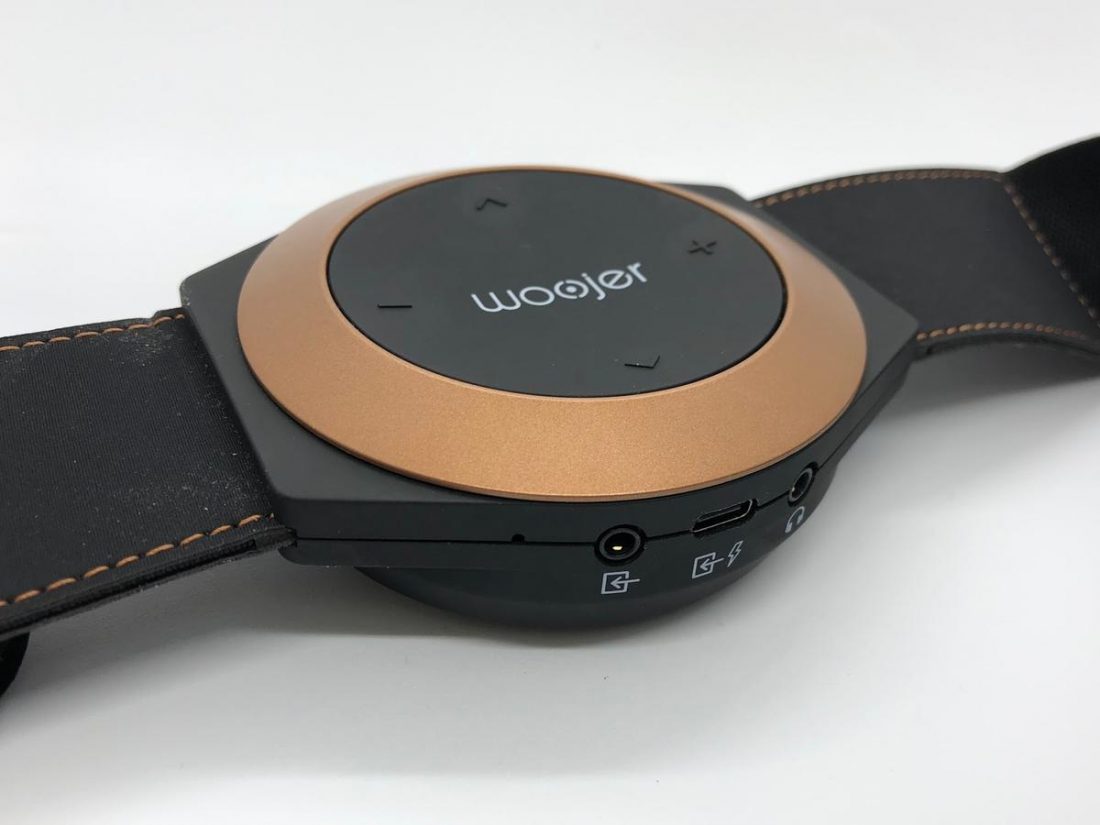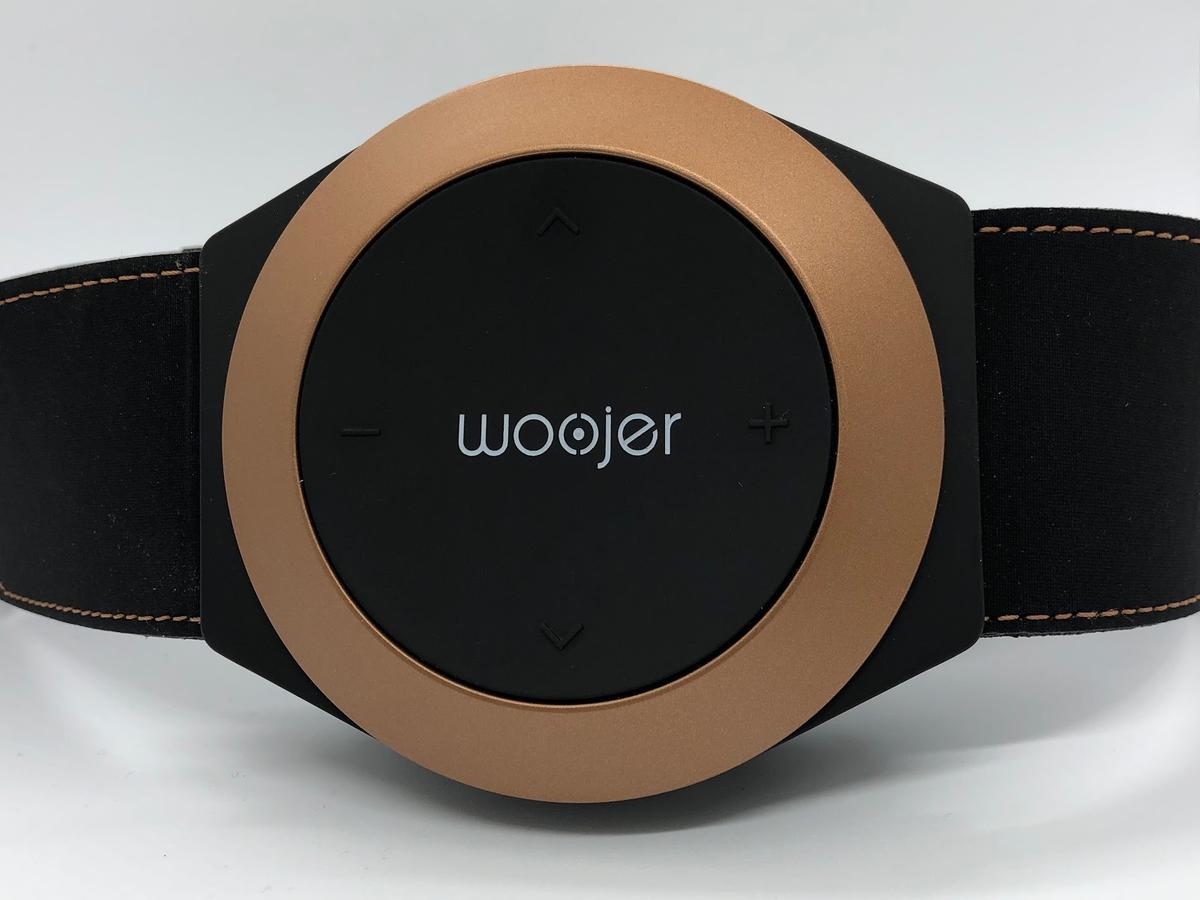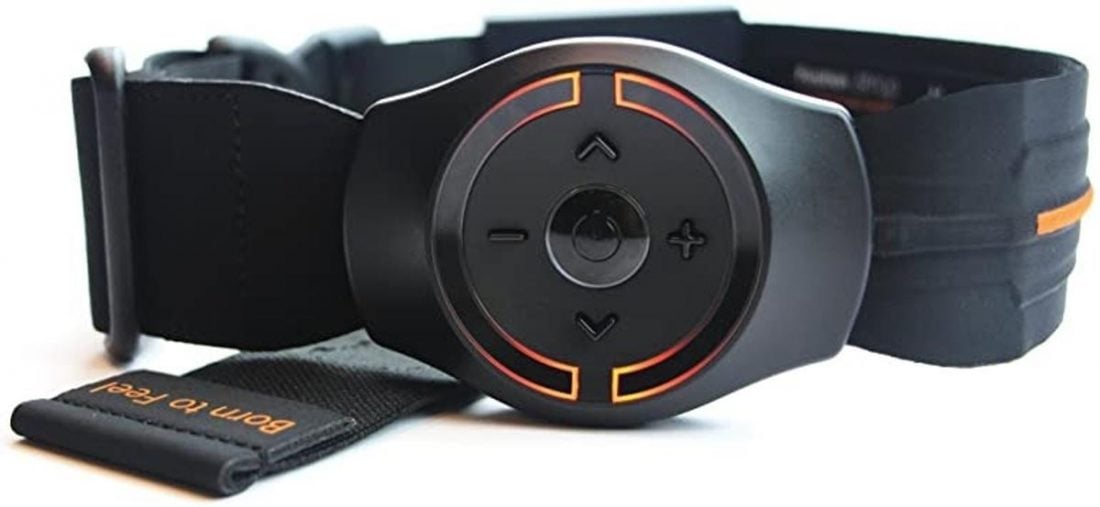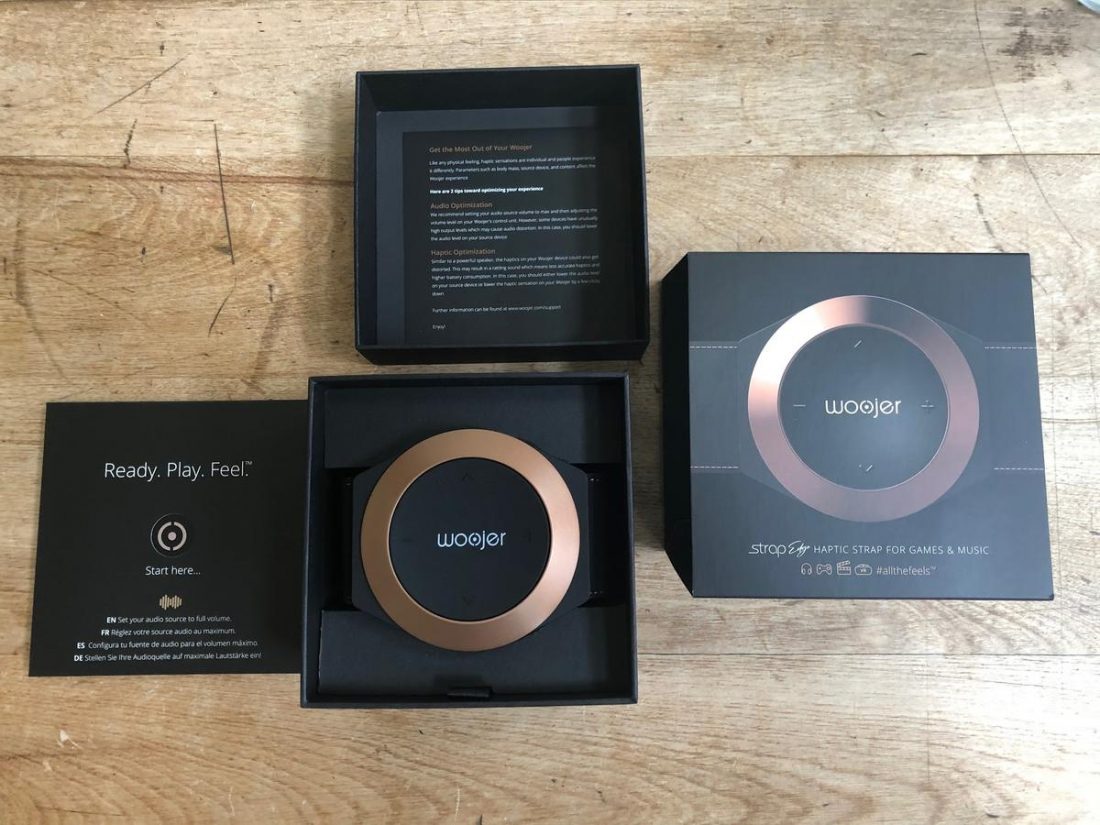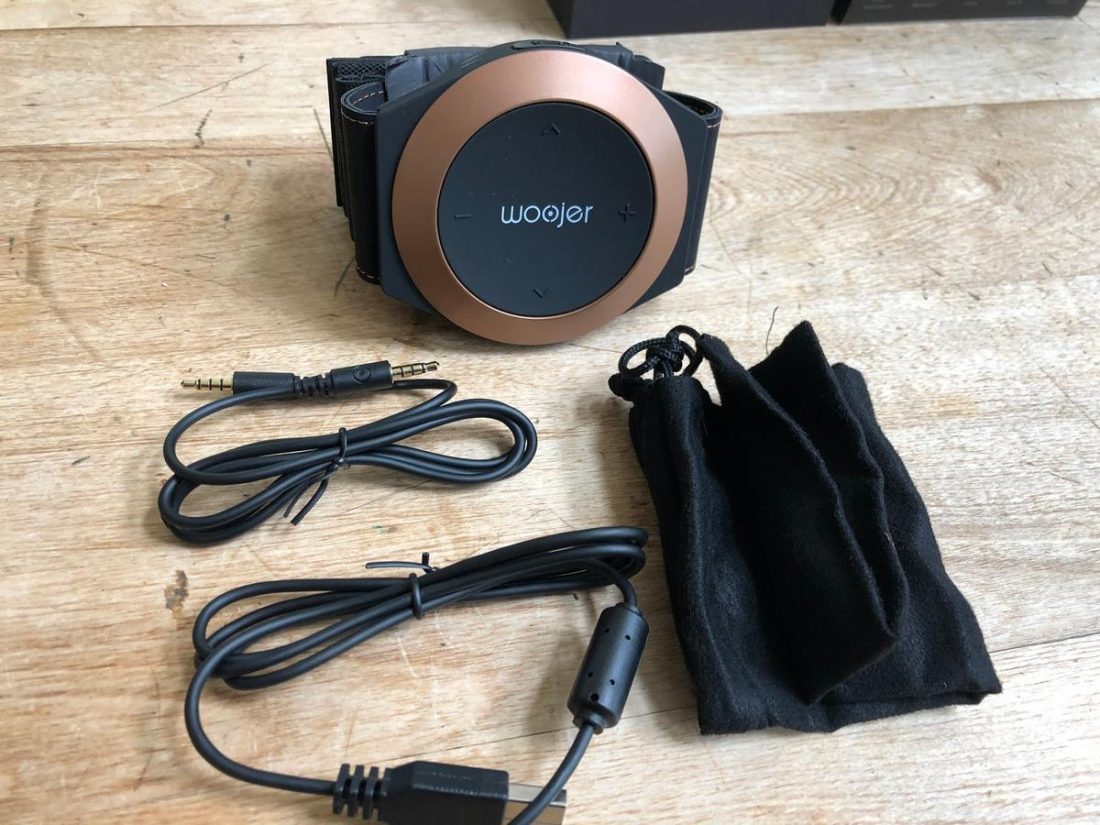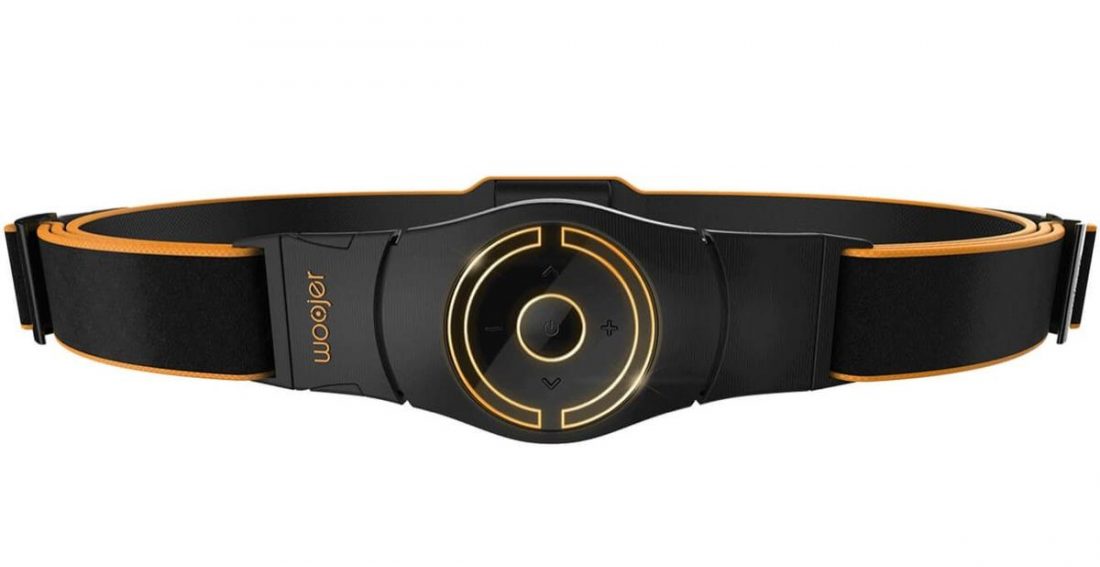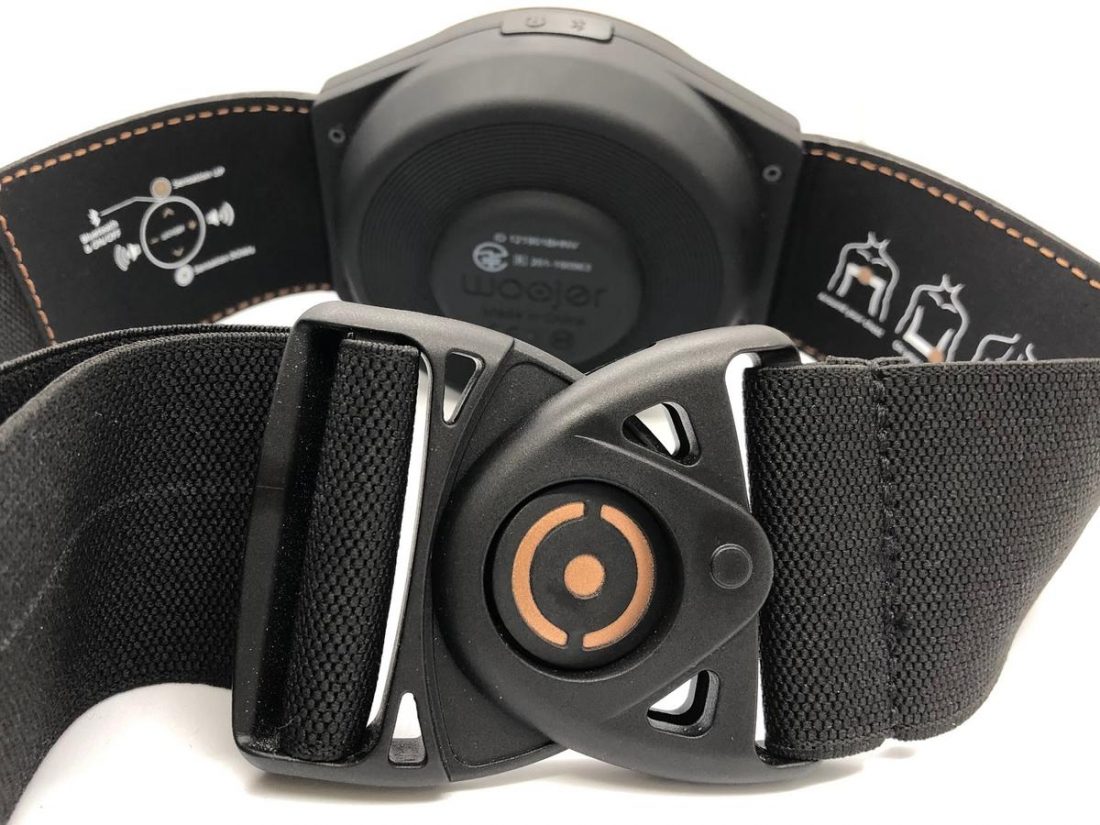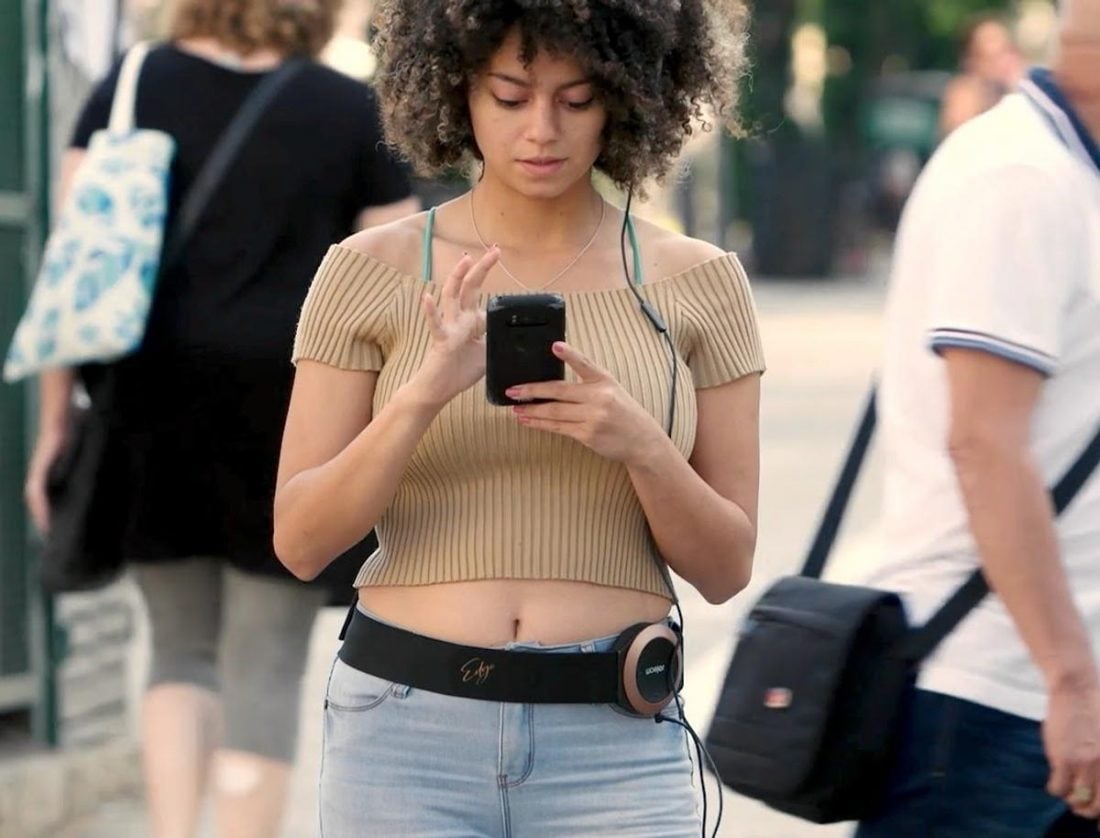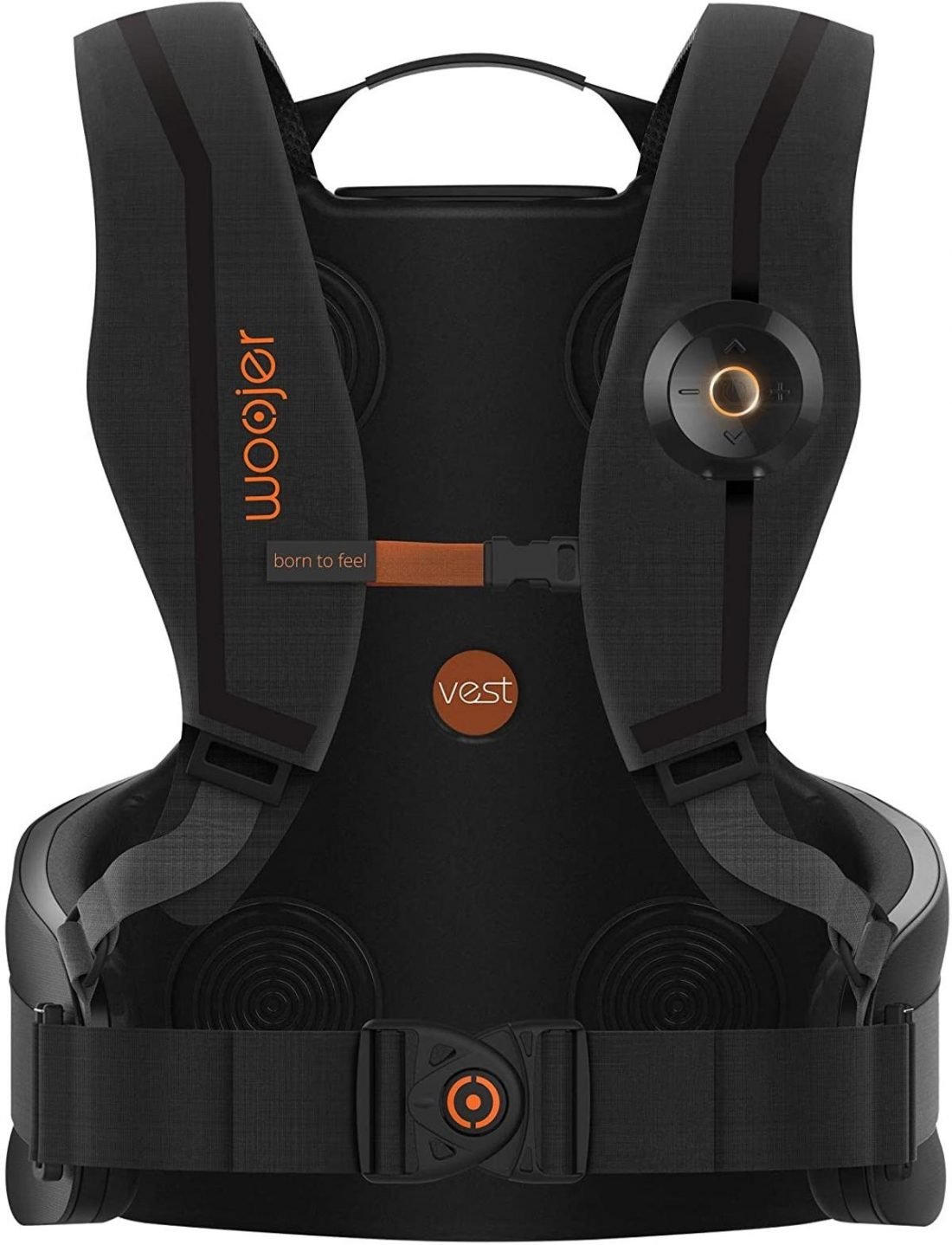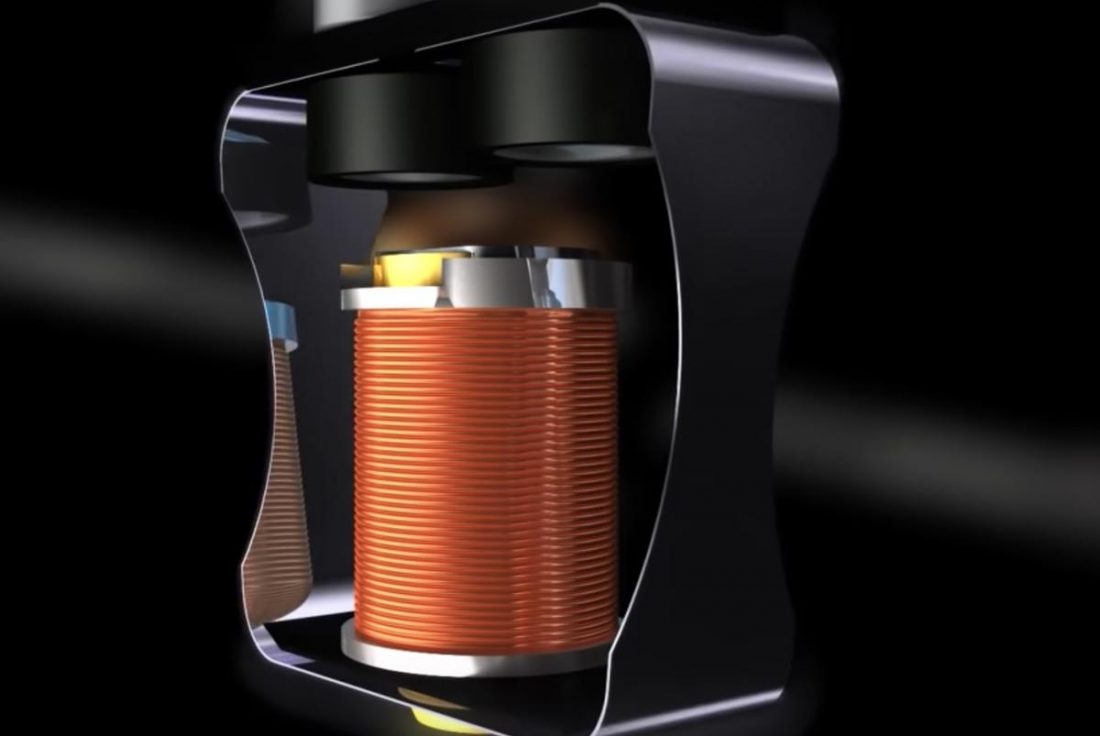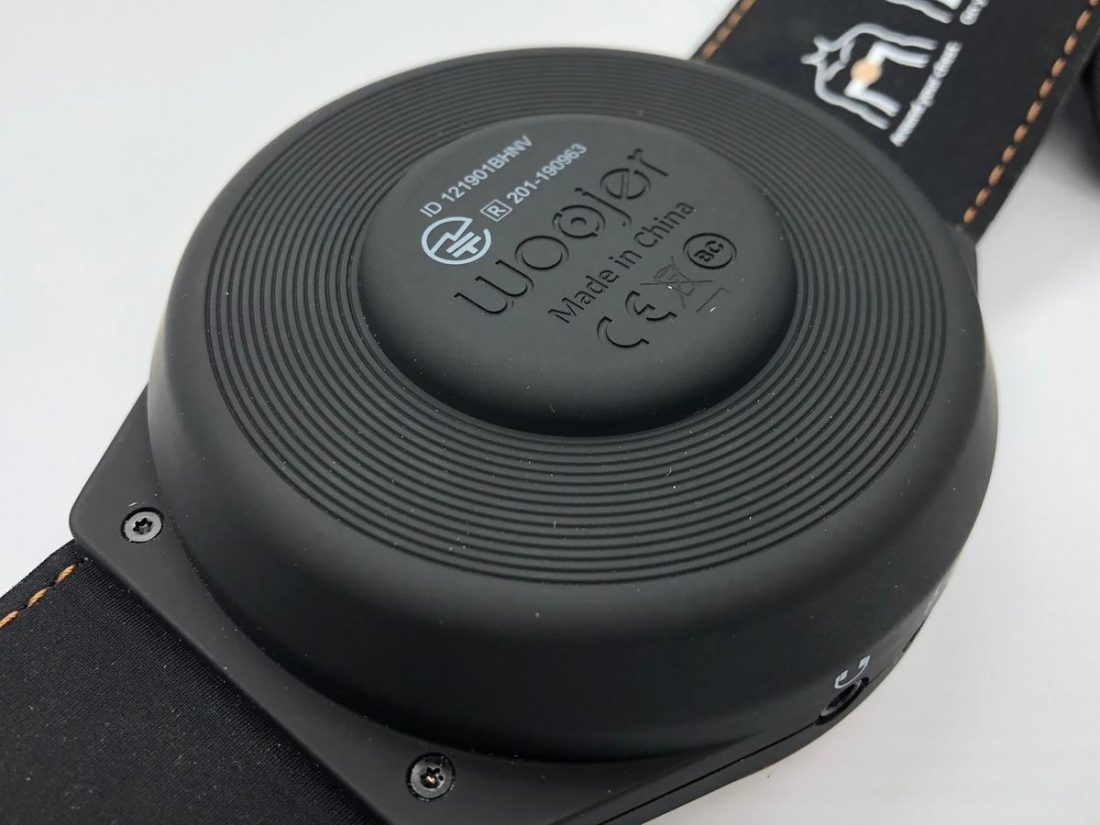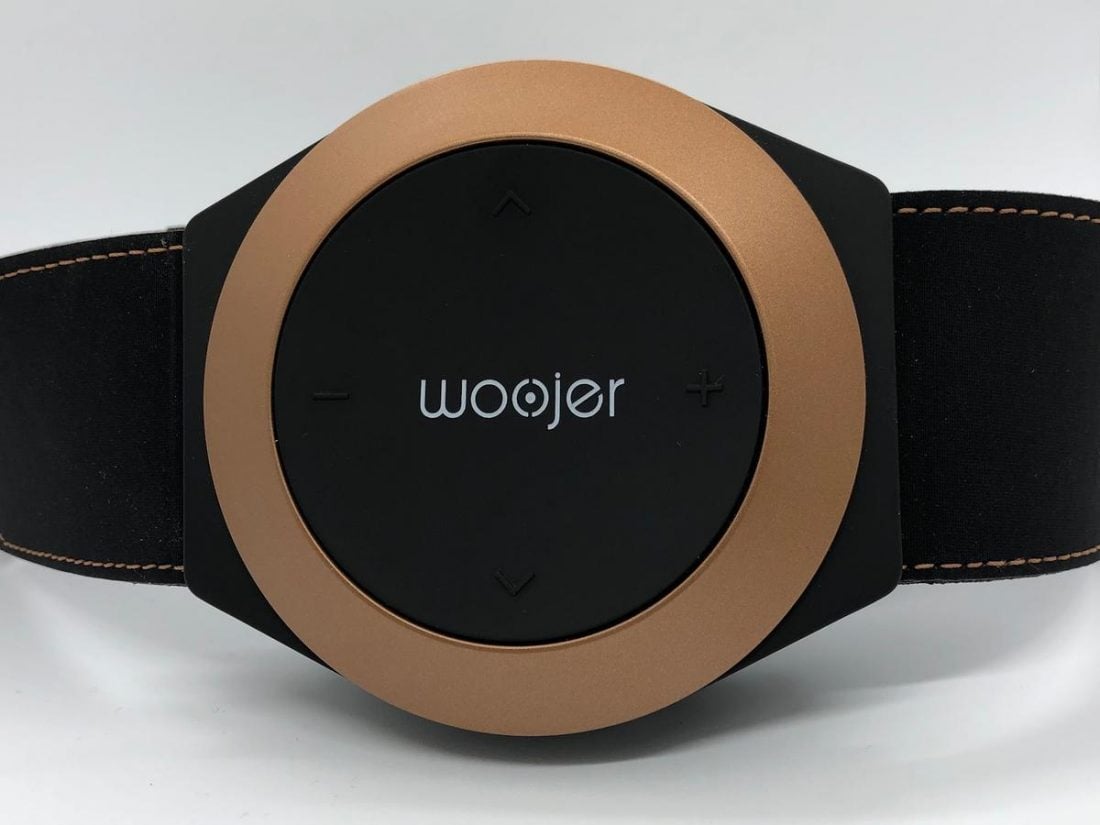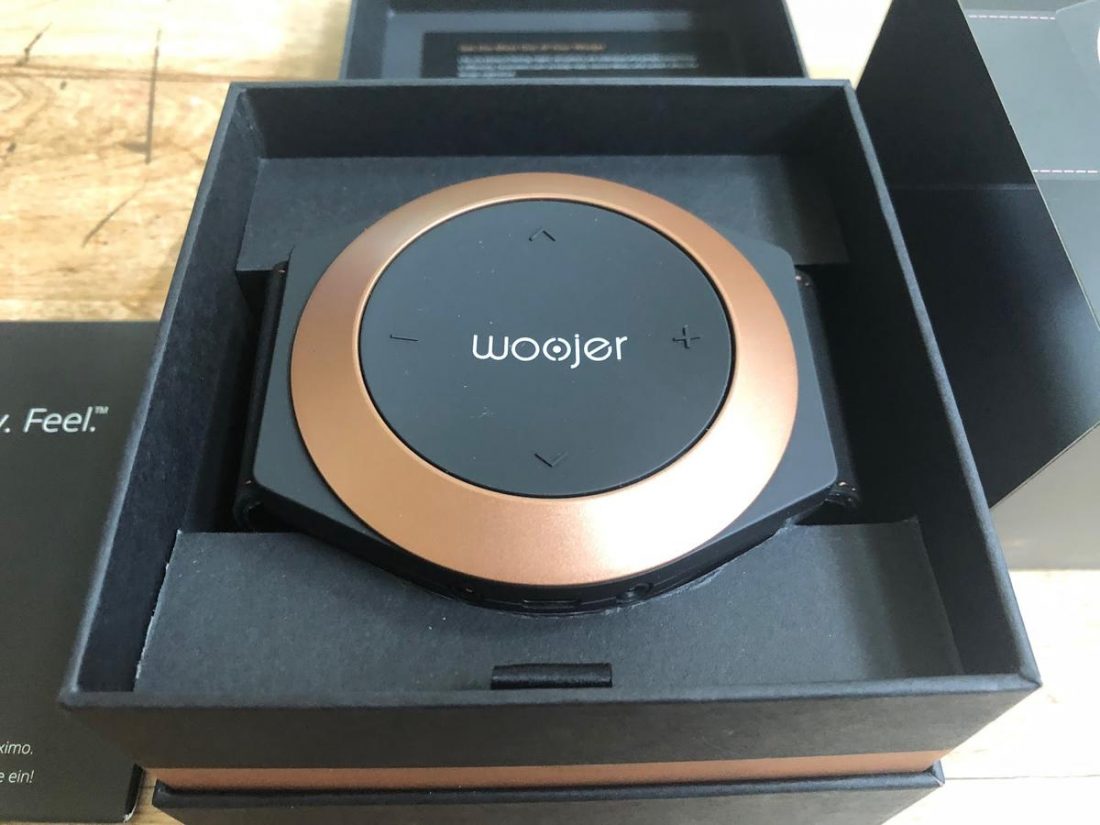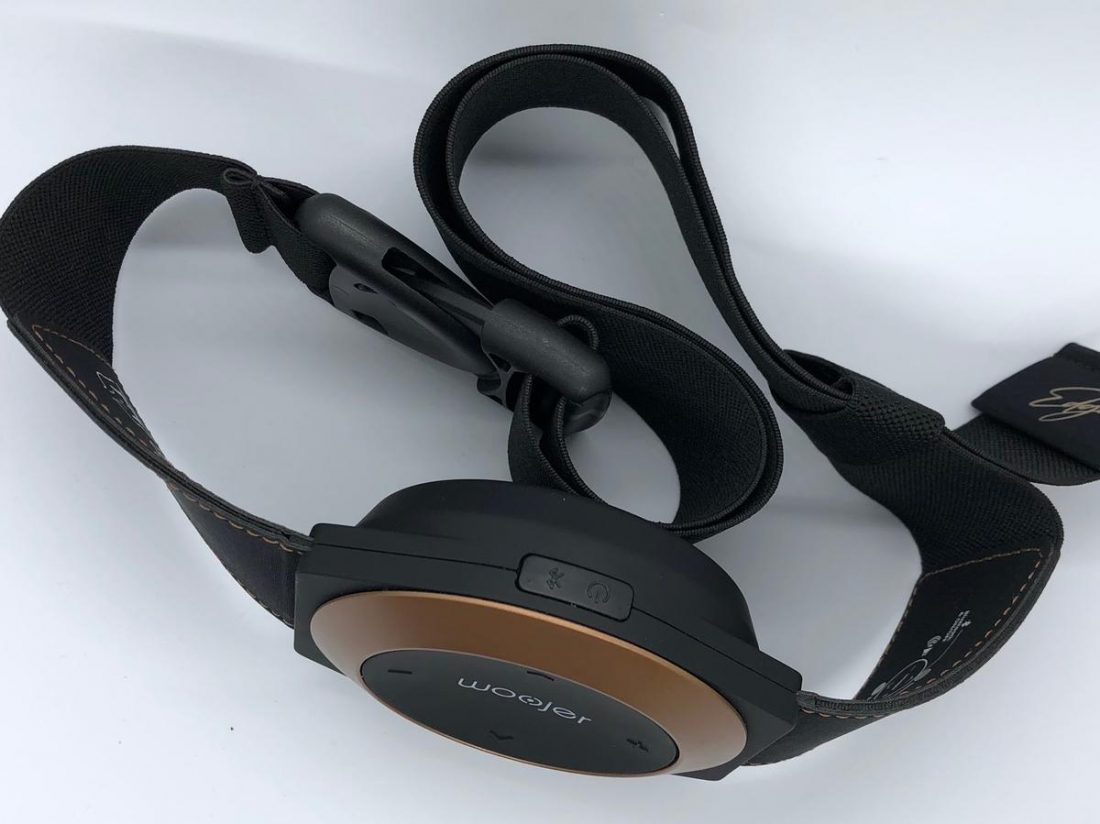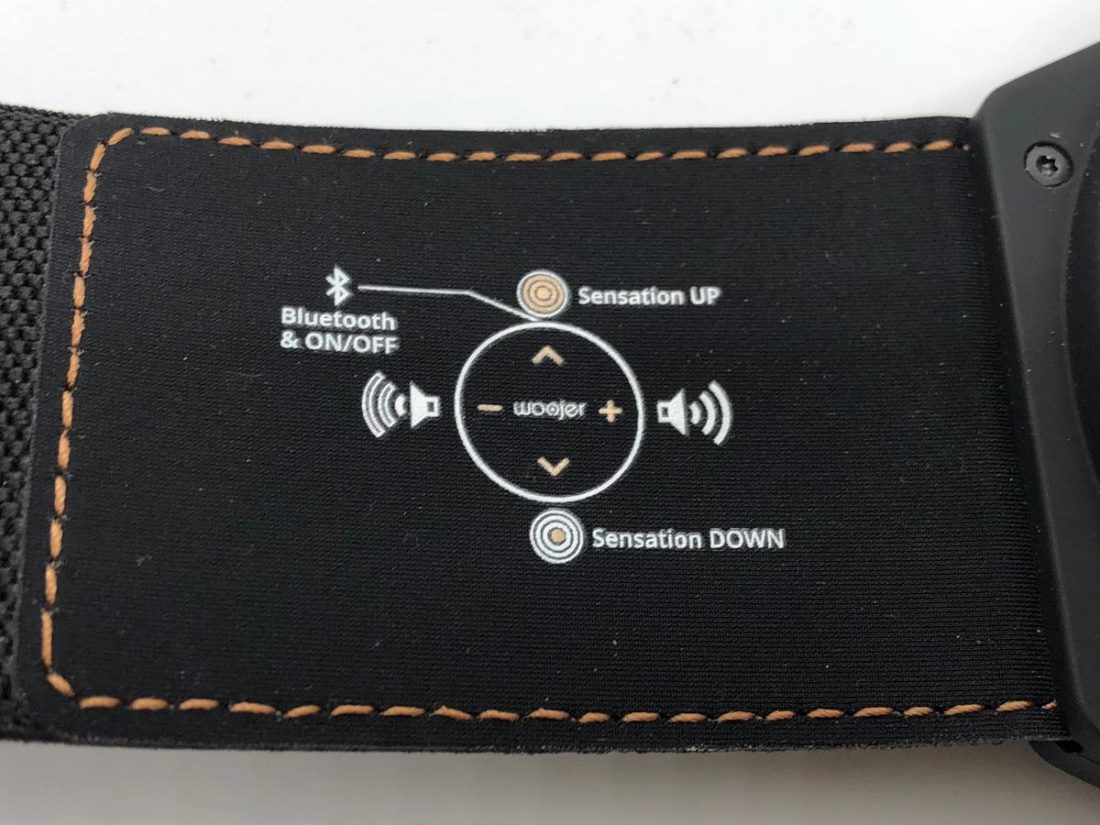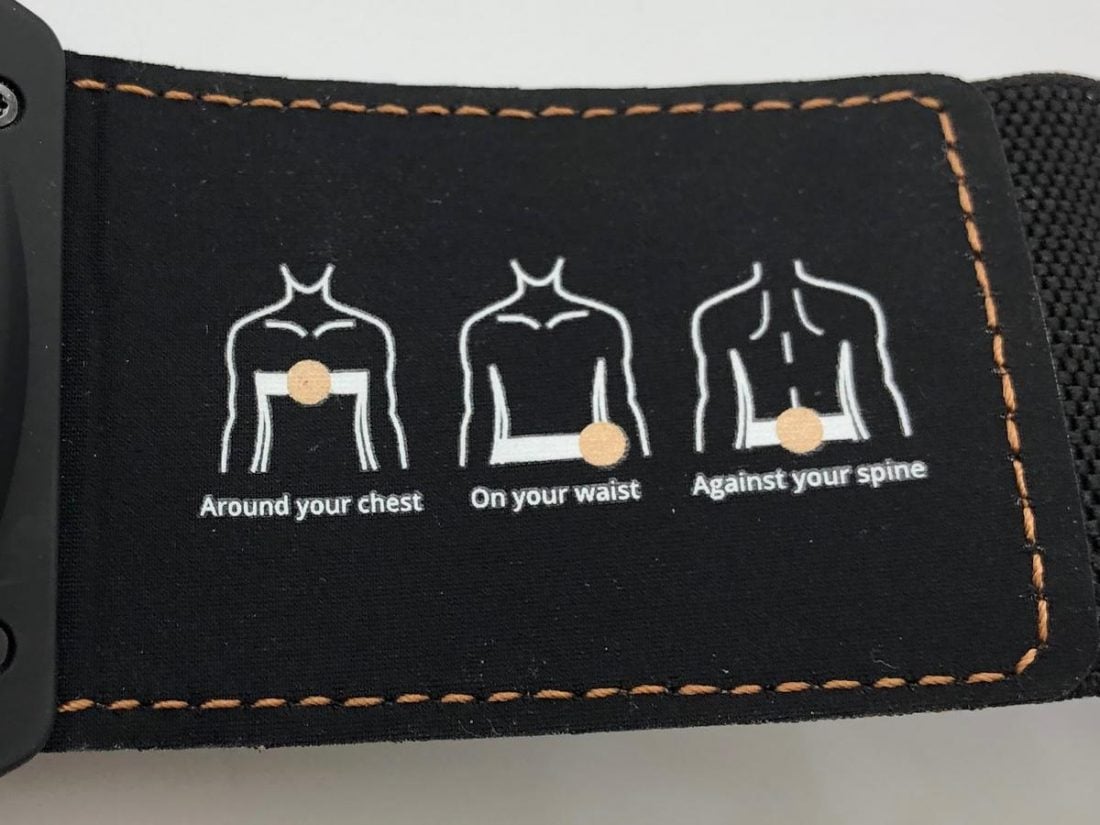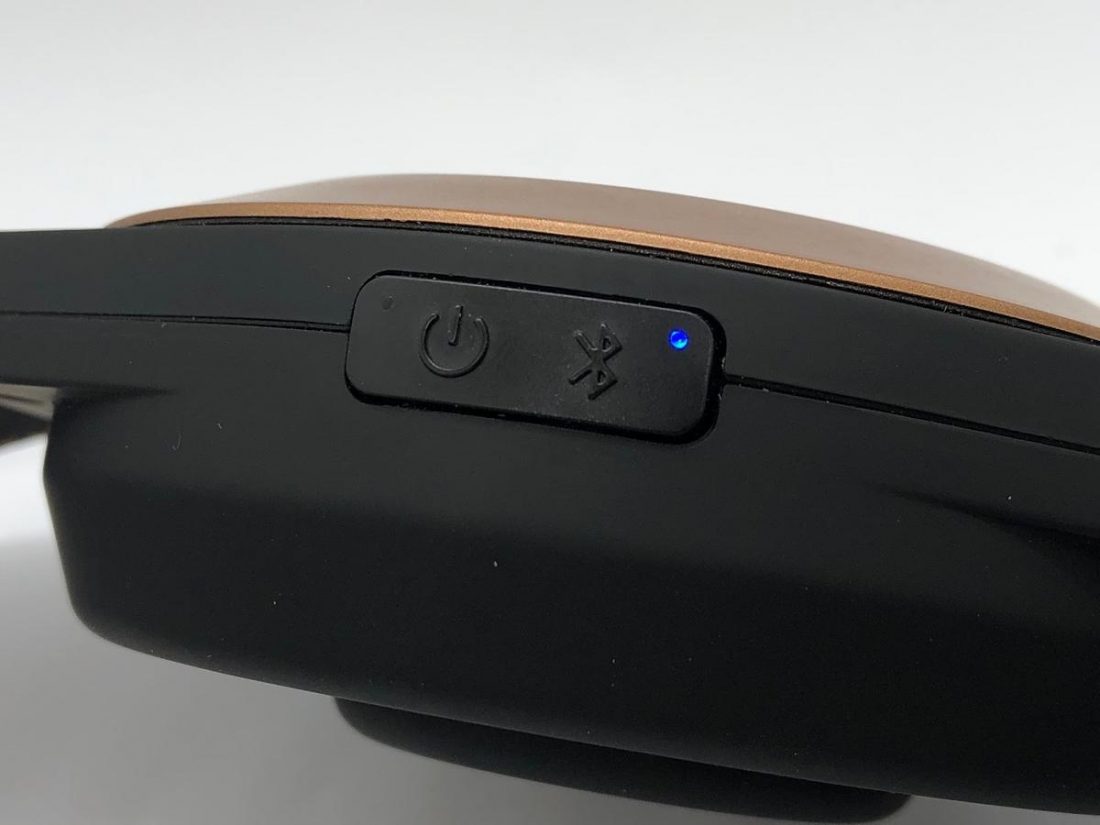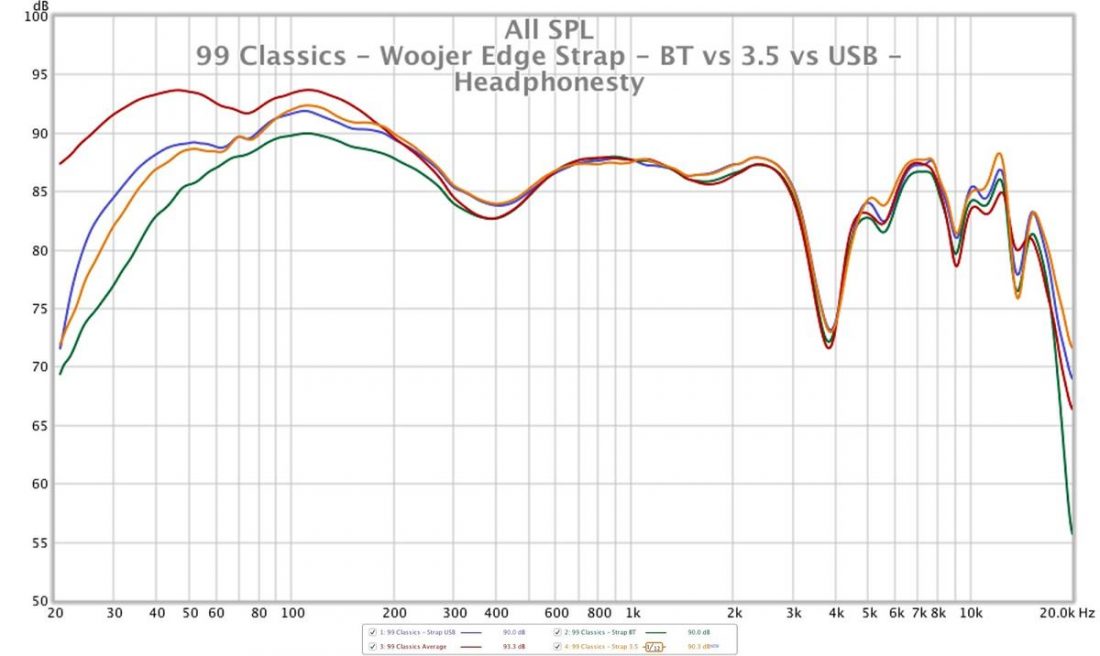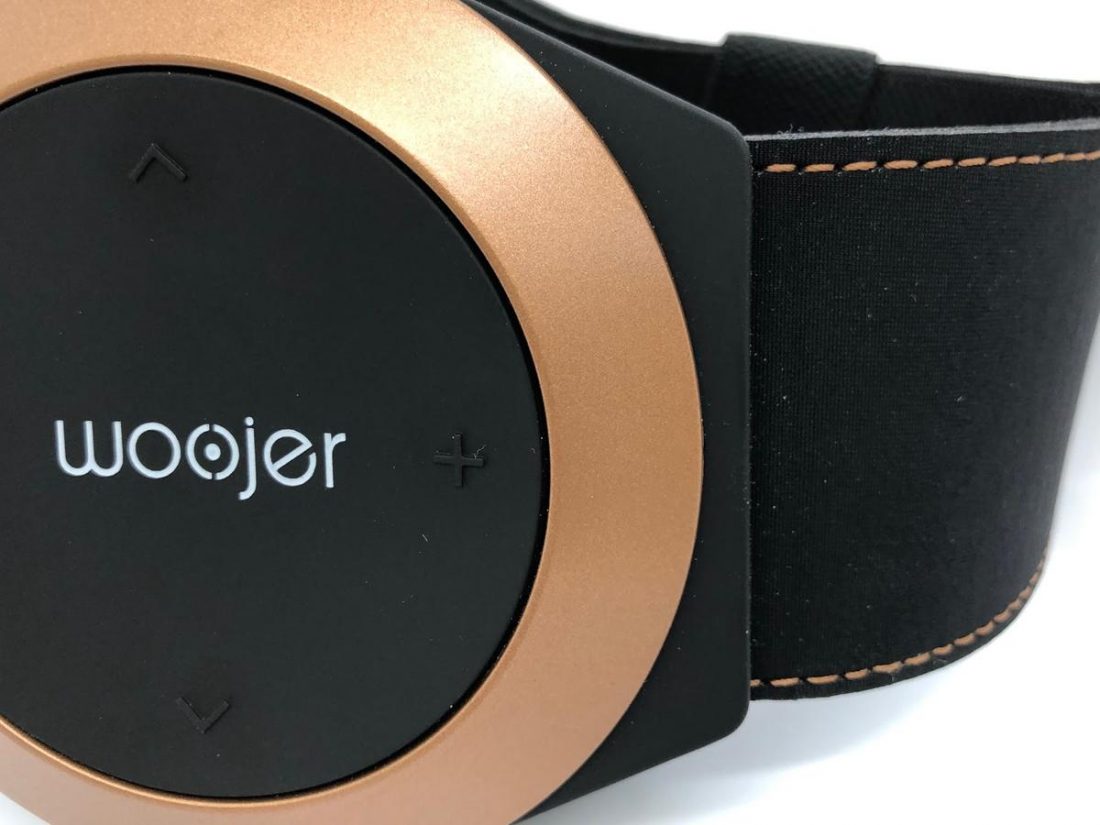Just about a year ago, I stumbled across an interesting sounding Kickstarter campaign. A headphone accessory that I had never considered before. Not only is it a portable Bluetooth DAC/Amp, but it comes with its own strap to wear as a belt (or bandoleer if Chewbacca fashion your thing). Oh yeah, and it’s a haptic transducer (a fancy vibrating bit) so you FEEL the music. How could I resist? Spoiler alert… I couldn’t. The Woojer Strap Edge is currently available for $180 (as of writing on sale for $130). There’s also something more immersive (and insane looking) available in the form of a tactical Vest for $500 (as of writing on sale for $350). I’d say the Woojer Edge products constitute a unmitigatedly successful Kickstarter campaign. Woojer claims the somewhat specific title of the “#1 Most crowdfunded haptic technology!”, but with 150,000 customers in 106 countries, they raised $1,916,253 pledged of $20,000 goal, with about 11,000 initial backers. The Woojer Edge series can be connected to any standard audio source via a 3.5mm cable, USB-C connection, or via a Bluetooth connection. They are intended for music, gaming, exercise, and video watching. The device is silent but vibrates in response to low-frequency tones, to give the impression of proximity to a huge bass cabinet. Headphones plug into the Woojer device to pass along all the audible content and are powered by an internal DAC/Amp chipset inside. If you are like me, you didn’t even realize you were potentially missing an immersive element of headphone listening. We enthusiasts invest in new gear to squeeze out a few percentage points of improvement. What if we’ve all been missing something fundamental to the experience all along? After some long COVID related delays to manufacturing and shipping, the Strap Edge finally arrived this summer. Can this unique device deliver on enhancing the experience from any pair of headphones? I’ll admit, I was eager to find out.
Woojer Overview
Way back in November 2013, Woojer launched its first Kickstarter Campaign. This eventually turned into their first product, the Strap (developed over 2015-2016 and finally on sale in 2017). Initial success and feedback quickly led to the development of the Edge series. Woojer considers themselves “…a pioneer in the field of haptic technology with a fundamental patent portfolio and products that deliver high fidelity tactile sensation which reproduce the rich emotion of sound.” These haptic products are the entirety of the product lineup and Woojer has jumped with both feet into this unique niche industry.
Strap Edge Specifications
Transducer: Osci TRX52 (52mm with improved mechanicals and energy efficiency) haptic transducer Transducer frequency response: 1-200Hz Amplifier: Texas Instruments built-in analog headphones amplifier Amplifier power: 105mW output into 16ohm headphones Analog output: 3.5mm stereo headphones out – Support TRRS (mic) headphones connector THD+N: 0.1% THD+N headphone output Bluetooth: Qualcomm 8675 CSR APTX Low-latency Bluetooth 5.0 connectivity Analog input: 3.5mm stereo line-in, supporting TRRS input (mic) USB input: single USB-C port for audio-in, firmware updates, charging port Charging time: Approximately 3 hours Battery: Rechargeable Lithium-ion battery (3350mAh, 4.2V) Runtime: Up to 8 hours playtime, depending on usage and volume/sensation level Power off: Auto power off Controls: Built-in independent headphones & sensation volume control Indicators: 2x LED indicators Water-resistant: No Weight: 240 grams Warranty: 12 months
Strap Edge Packaging
Woojer spared no expense when putting together top-notch packaging. It’s a seriously nice unboxing experience and does help highlight the overall quality of the product. I was impressed when I first saw the box and I stayed that way throughout the process.
In the box
Strap Edge USB C charging cable 3.5 mm audio cable Carrying pouch User manual
Accessories
The included accessories are really all you need for the Strap Edge. Both the USB C cable and dual 3.5 mm audio cable are made of basic black plastic but they feel reasonably high quality. The logoed black fabric carrying pouch is a nice addition and is plenty roomy enough to easily put the Strap Edge away and (minimally) protect it when tossed in a backpack.
Strap Edge Design
I haven’t experienced the original Strap. However, the Edge version imparts the impression of being a mature and evolved product. I assume that Woojer implemented their learnings from their early designs and the Strap Edge is the better for it. The result is an astonishingly high-quality product. The housing is constructed of a solid, velvety-feeling, black plastic. The four buttons on the front face (volume +/- and vibration up/down), and the top power/Bluetooth button are nicely raised and easily distinguished by feel. The copper-colored ring and stitching highlights are tasteful and attractive. The strap is seatbelt width (approximately 5 cm) but is elasticized and sturdy-feeling. It easily slides and stretches to theoretically fit most any body size. There are even helpful instructional pictures printed on the bottom of the leather-like attachment pieces which hold the stretchy part of the belt to the device. This is the sort of useful design feature that is usually overlooked, and I greatly appreciate the attention to detail. The plastic clip is a unique dual arrowhead shape and holds securely. It really feels like you are clipping on Batman’s utility belt when you fasten the Strap Edge around your waist.
Internals
While this review is specifically on the Strap Edge device, it’s important to note that the Vest is based on the same technology and much of what we discuss will be applicable to both. Rather than a single haptic transducer (like the Strap), the vest contains six of the same actuators arranged in a stereo configuration of 2x sides, 2x back, 2x front. Woojer calls their mechanical haptic actuators (fancy talk for the things that vibrate) “Osci”. They claim that the Osci differs from other haptic designs because they are a “revolutionary polyphonic haptic technology that behaves like a musical instrument,” and that the Osci provides the “world’s most realistic haptics”. There are 3 different versions of Osci:
TR32 – 32mm transducer TR52 – 52mm transducer – 3X more powerful than the TR32 TRX52 – R52 with improved mechanicals & energy efficiency
The Strap Edge uses the newest TRX52 model Osci. It’s based on a closed-loop metal frame that incorporates permanent magnets at the top. This frame vibrates back and forth when the wire-wrapped core at the bottom of the loop receives a signal. While fairly cryptic on the trademarked details of the design, they describe the transducer’s stator core as “I” shaped and that it uses the human body as the resonator. The Strap Edge works on the psychological concept of Perceptual Inference. Perceptual Inference refers to the ability to expect sensations based on past experience. We expect a variety of sensations, not just one from a single sense (touch, smell, taste, sight, or sound). In this case, we’ve all felt the physical sensation of low bass sounds coming from speakers. We are conditioned to expect to feel the vibrations of low bass moving through us. This expectation is what makes the illusion, created by the Strap Edge, work. While the device is entirely silent, when we hear low bass from our headphones, the Strap Edge simultaneously vibrates at the same frequencies. Our brain merges the two sensory inputs into a single sensation.
Bluetooth
The Woojer Edge series products are based on the Qualcomm 8675 Bluetooth chip, which supports Bluetooth 5.0, 192kHz 2-channel playback, cVc noise cancellation, and the aptX Low Latency (LL) codec. It took some digging to find out the details of how the Strap Edge treats Bluetooth connections. It appears that it supports SBC, AAC, and aptX codecs. You can have a fully wireless setup if the audio source supports Dual Audio Bluetooth connectivity (found on Android devices like the Samsung Galaxy 8 and above). This means that both the headphones and Strap Edge can be connected to the source without cables. I discovered a limitation of the dual Bluetooth connectivity in the comments section of the Kickstarter campaign. The Strap Edge will only use the higher-quality aptX codec if it’s the only Bluetooth audio device connected. Once two devices are connected it defaults back to the lower quality 16-bit SBC codec.
Firmware updates
A further limitation of the Qualcomm 8675 Bluetooth chip is that it does not allow for updates to be done via Apple computers, so you will require a Windows PC and the included USB C cable to perform software updates. Wireless Over the Air (OTA) updates are also not supported by the Strap Edge due to the size of the update files and the relatively slow nature of the OTA protocol. Woojer states that an OTA update for the Edge devices might take as long as 30 minutes to complete, which opens up the possibility of introducing errors and is simply an unacceptably long time period. Woojer has recently released a version 2 of the firmware, which solved some issues and added a new operational mode. This new mode is called ‘Focused Mode’, while they’ve named the default functionality ‘Broad Mode’. To toggle between the two modes, simultaneously hold down the “+” and “-“ buttons on the Edge control panel for three seconds. You will hear “Focused Mode” or “Broad Mode” in the headphones.
Strap Edge Experience
While the Broad Mode is the default, I found a great improvement switching over to the new Focused Mode. The difference between them is that Broad Mode functions up to 200 Hz, while Focused Mode cuts off at 100 Hz. Perhaps it’s just my personal tastes, but I was never quite satisfied with the experience using Broad Mode. For the most part, I found the vibration distracting and out of sync with the sound, especially with music playback. My best experiences were with action films on Netflix, such as the Bruckheimer explosion-fest Six Underground. Focused Mode is designed to work with louder, higher-quality signals. If you are connected to a computer listening to mastered lossless audio files, playing a high-fidelity PC game, or watching a movie over Bluetooth, or any other situation where there is not volume normalization in play, Focused mode is the way to go. This is pure sub-bass mode, with a frequency response of up to 100hz.” – Woojer With this sort of visceral film, the Strap Edge adds to the experience, vibrating away with abandon almost start to finish. However, with less explosive fare, the vibrations just feel out of place. It appears as though my brain doesn’t expect to feel vibrations above 100 Hz. I changed over to the Focused Mode and all of a sudden, what I feel is in line with what I hear. If that’s your thing, ya’ll gonna love the Strap Edge. I can only imagine the Vest is just more of a good thing. There apparently is (was?) a companion application called Woojer Beat that functions as a haptic metronome to feel the rhythm with the Woojer Edge products. Either it isn’t available in Canada, or it no longer exists as I was unable to locate a working link for it.
Settings
Since you have to balance the output of the headphones with the amount of tactile sensation, the front face of the Strap Edge allows you to separately dial them both in (tactile sensation up/down, audio volume left/right). In addition, you need to match the source output with the device, although in general, I found near maximizing the source volume output the best place to start. If the source volume is turned down too low, the vibrations will be too soft.
Woojer’s suggested source volume levels
Xbox/PS4/Switch via 3.5mm: 100% Windows/Mac Lossless or Games via USB or Bluetooth: 20%-50% Normalized Streaming Audio over USB or Bluetooth: 60%-100%
Woojer does warn that “High-level output source material such as lossless audio or video games over USB should be attenuated! In short, if the signal is too loud going into Woojer, simply turn down the source and turn up the headphone level and Intensity on the Woojer Edge control panel.”
Strap Edge Wearability
The Strap Edge works best when you stop paying attention to it. This may explain why watching movies or playing games seems to be preferable to music listening. Distraction is the key. If you are paying attention to the device itself, the illusion is shattered. The Edge products are designed to enhance music, personal theatre, gaming, and exercise. The Woojer team claims that they “…are visionaries who understand the intertwined relationship between sound, vision, emotion and immersion.” The trick to making that work, as best I found, was to just forget about it. The Woojer demonstration videos show attractive folks giggling and oohing about the sensation. Ironically this is when the experience is working the worst. Those folks aren’t seamlessly ‘experiencing the music’, they’re just overwhelmed by the new sensation. However, given time to get used to it, and a bass-heavy playlist, the Strap Edge can be a lot of fun while listening to music. I’m vibing away to the Beastie Boys while I type this, and genuinely enjoying it. The Strap Edge and I have also spent lots of time watching movies on my phone and saving the city with Spiderman on the PS4. The Strap Edge can be worn at the waist, with the unit on your front left hipbone, or in the center of your lower back positioned on your spine. It may also be worn around the chest and positioned on your sternum. I find the hipbone position the most comfortable, and I can’t imagine women finding the chest placement comfortable, my wife certainly doesn’t. Positioned on your hip bone, the vibrations are transferred to the entire pelvis, so you feel it through the width of your body. However, since the Strap Edge is so localized, it isn’t the same experience as having a huge bass bin shake your chest cavity. I expect the Vest would do a better job of this as the 6 haptic transducers are spread over the body. If you are sitting, it is possible to wear the Strap Edge on your hip bone or chest, however, located on your spine makes finding a comfortable position difficult.
Strap Edge Sound
The onboard Texas Instruments DAC/amplifier is rated at a power output of 105mW into 16ohm headphones. This means it isn’t suitable for extremely inefficient headphones but is more than sufficient for relatively easy to drive options. I primarily used the Strap Edge with Koss PortaPro and Meze 99 Classics headphones and I have no complaints about how much power is provided. An interesting thing was revealed when I measured the headphones connected to the Strap Edge with the miniDSP EARS device. The bass response, starting under around 300 Hz is significantly attenuated. This appears to be regardless of the Mode selected (Broad or Focused). Perhaps this is an intentional part of the Woojer tuning process and makes the ‘bass you feel’ more prominent if the ‘bass you hear’ is dialed down. Recreating the measurements with the 3.5mm analog input cable, rather than via Bluetooth, yielded similar results, but not quite as bass attenuated. The same for when I connected the Strap Edge via USB. Although I performed multiple measurements and averaged the results, it is possible that the headphone position and ear pad seal on the EARS may account for some of the differences between the Strap Edge measurements.
Strap Edge Conclusion
While I received my Woojer Strap Edge by purchasing through the Kickstarter campaign, you can purchase one directly from Woojer right now for $130. I struggle with assigning a value to the Strap Edge. It’s not an inexpensive device, and it’s seriously not a necessary accessory for headphone listening. On the other hand, it’s novel and enjoyable, it basically delivers what it promises, and the amount of technology bundled into a single well-made package is impressive. This isn’t an audiophile product and it doesn’t pretend to be. It prioritizes the haptic experience over audio quality. With that in mind, however, it’s seriously fun. Want your pelvis to vibrate while you listen to some deep bass hits? Want to feel the video explosions as well as hear them in a blockbuster movie? The Strap Edge is not for everyone. It’s a bit of a novelty and a toy, but a really nicely made one. It works best when you forget about it and just get into whatever you are listening to. And I’m ok with that.

